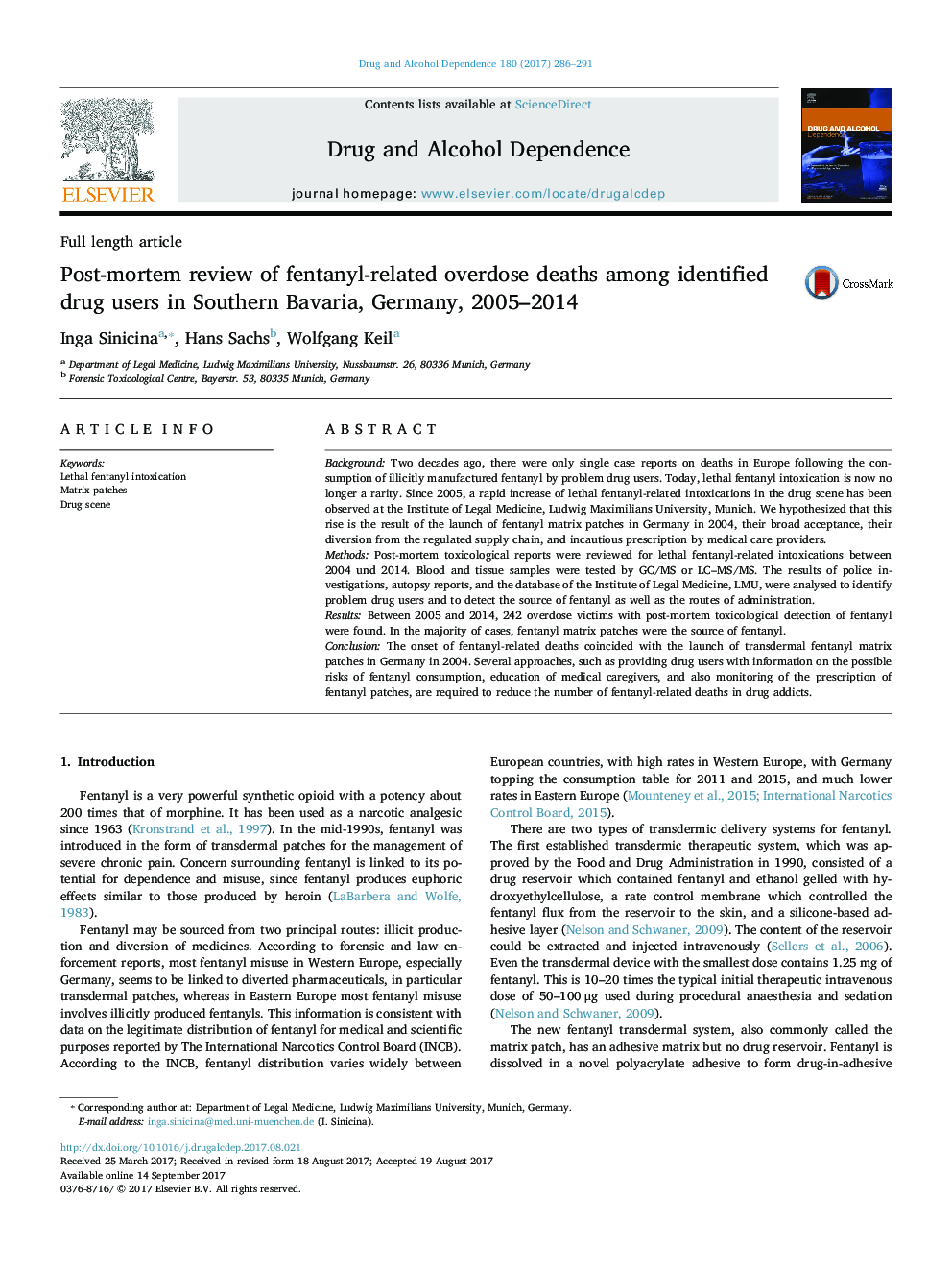| Article ID | Journal | Published Year | Pages | File Type |
|---|---|---|---|---|
| 5119867 | Drug and Alcohol Dependence | 2017 | 6 Pages |
â¢Cohort of 242 people belonging to the drug scene with post mortem fentanyl detection.â¢Fentanyl-related deaths are associated with the launching of transdermal matrix patches.â¢Fentanyl was mostly extracted from fentanyl transdermal matrix patches and injected.â¢Tamper-resistant formulations is a promising approach to reduce the number of deaths.
BackgroundTwo decades ago, there were only single case reports on deaths in Europe following the consumption of illicitly manufactured fentanyl by problem drug users. Today, lethal fentanyl intoxication is now no longer a rarity. Since 2005, a rapid increase of lethal fentanyl-related intoxications in the drug scene has been observed at the Institute of Legal Medicine, Ludwig Maximilians University, Munich. We hypothesized that this rise is the result of the launch of fentanyl matrix patches in Germany in 2004, their broad acceptance, their diversion from the regulated supply chain, and incautious prescription by medical care providers.MethodsPost-mortem toxicological reports were reviewed for lethal fentanyl-related intoxications between 2004 und 2014. Blood and tissue samples were tested by GC/MS or LC-MS/MS. The results of police investigations, autopsy reports, and the database of the Institute of Legal Medicine, LMU, were analysed to identify problem drug users and to detect the source of fentanyl as well as the routes of administration.ResultsBetween 2005 and 2014, 242 overdose victims with post-mortem toxicological detection of fentanyl were found. In the majority of cases, fentanyl matrix patches were the source of fentanyl.ConclusionThe onset of fentanyl-related deaths coincided with the launch of transdermal fentanyl matrix patches in Germany in 2004. Several approaches, such as providing drug users with information on the possible risks of fentanyl consumption, education of medical caregivers, and also monitoring of the prescription of fentanyl patches, are required to reduce the number of fentanyl-related deaths in drug addicts.
